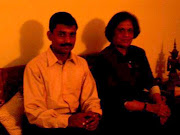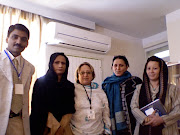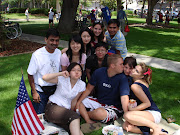The urgency to complete this article is due to the current storm over the legality of the Chittagong Hill Tract (CHT) Manual Act, 1900 after 150 years of its enactment which has triggered tension and anxiety among the hill people in the CHT. A person named S.P Marma from Rangamati filed the writ petition with the High Court challenging the legality of the CHT Manual Act, 1900. Though the hearing of the writ will be held shortly, it has switched on yet another panic button in the CHT. The Adivasi leaders of CHT expressed their anxiety and worry over this issue and feared that, if the court rule goes against the act, ‘indigenous life and culture would come under threat and even the history of CHT might be distorted’. The three circle chiefs (Mong, Chakma and Bomang) of the Khagrachhari, Rangamati and Bandarban, CHT Regional Council and the Headman (village chief) Association have already submitted separate memorandums to the Law Minister expressing their deep anxiety over the petition. Moni Swapan Dewan, the Deputy Minster of CHT Affairs, also expressed his anxiety to the government over that petition.
Historically speaking, it was in 1860 the British government divided the Chakma kingdom of Chittagong into two districts named Chittagong and Chittagong Hill Tracts by Act XXII. Chittagong was then included into Bengal Province of India which soon became completely populated with the Bangladeshi people. In the case of the CHT, the British recognized the distinct identity of the tribes by treating the CHT as an ‘Excluded Area’ and in order to protect constitutionally their political, economic and cultural rights, they had administered it under a separate edict called the Chittagong Hill Tracts Regulation of 1900 - also known as the CHT Manual. The CHT Manual laid down detailed rules and regulations for the administration of the CHT. The Manual has clearly stated that: “No person other than a Chakma, Mogh or a member of any tribe indigenous of CHT, the Lushai Hills, the Arakan Hill Tracts or the State of Tripura shall enter or reside within CHT unless he is in possession of a permit granted by the Deputy Commissioner at his discretion.” (Read also: Section 18, Article 7 of Chapter 3, Rule 7(1), Rule 34, Rule 51, and Rule 52 of the CHT manual). However, administrative changes were made in CHT under British rule - Firstly, in 1921, the CHT Regulation of 1900 was amended to declare CHT a 'Backward Tracts' and gave the Governor in council sole authority in the area; and secondly, the Government of India Act of 1935 created CHT a totally 'Excluded Area' and so granted further recognition to the special status of CHT. But the provisions of the Manual were executed properly and the indigenous hill people were safe during the British period.
In August 1947, the British handed over the administration of CHT to the government of Pakistan. The Government of Pakistan amended the CHT Manual several times in order to find a legal excuse for migration of non-indigenous people and to open up the CHT for ‘resource exploitation’. Above all, the then Pakistani Government interpreted the CHT Manual as a legacy of British colonial administration which helped separating the CHT from the rest of the country. Therefore the constitution of Pakistan, promulgated by president Ayub Khan in 1962, changed the administrative status of the Chittagong Hill Tracts from that of an ‘Excluded Area’ to that of a ‘Tribal Area.’ However the CHT Manual remained in force. After independence, Bangladesh government also pursued deliberate attempts to bring in fold the administration of the CHT. After several rounds of negotiations between the government and the warring tribal movements from the 1980s onwards, a peace deal was finally struck on 2 December 1997. Thereby a partially autonomous self-government system has been re-established and the region has been officially recognized as a ‘tribal-inhabited area’, not questioning the legality of the CHT Manual.
But from 2003 onwards there were frequent writs challenging the legality or the constitutionality of several Acts of the CHT. Earlier, the Hill District Council Acts of 1989 and the CHT Regional Council Act of 1998 have been challenged in the Bangladesh Supreme Court through two separate writ petitions. The petitioners have alleged that ‘having a separate regional council for the CHT violates the unitary framework of the Bangladeshi republic’, and that it relegates the Bengali inhabitants of the region to ‘second class’ citizens and thus, offends the equal rights or non-discrimination clauses of the constitution. The recent controversy over the legality of the CHT Manual is also deliberated move in that line. It has to be understood that the absence of direct constitutional backing for the CHT self-government system with its primacy to indigenous peoples makes it susceptible to legal challenges in the High Court as a potentially unconstitutional arrangement. If the court orders to stop the implementation of CHT Manual Act, 1900, the Hill people will have to face legal battle against that, leading to yet another tragedy.











